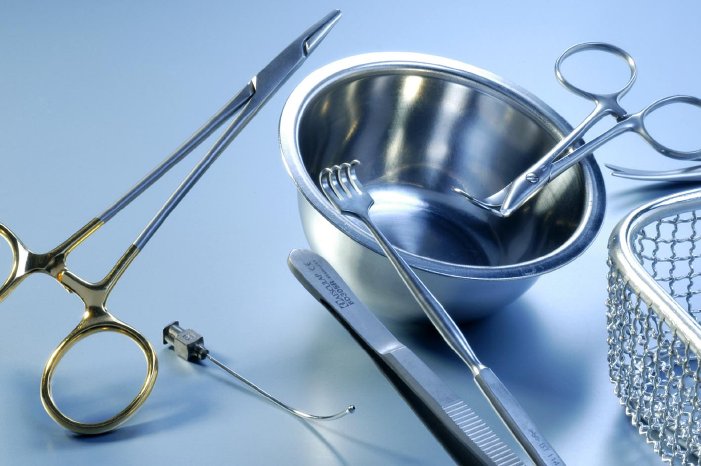The development and manufacturing of ultrasonic cleaning units for the medical branch and the design and construction of cleaning lines for industrial cleaning purposes in these businesses have always been one of the core competences of Elma.
The cleaning effect of ultrasound is really a secondary effect, which is created in the liquid: it is called cavitation.
Special ultrasonic transducer systems create strong vibrations within the cleaning bath, using the combined effects of high and low pressures. When a certain level of vibration is reached, the compound structure of the liquid breaks. In this process, tiny vacuum bubbles are created. Their dimensions are in the range of nano millimeters. The bubbles implode near the surfaces of the items that are to be cleaned. The implosions produce a pressure jet directed against the surface; and this pressure jet is what removes the dirt particles.
The discipline of cavitation research is still young and the ELMA Research and Development Department has always played an active and leading role in it. Numerous basic research projects have been carried through in cooperation with various universities, their aim being to establish regularities concerning the vibrations of bubbles and the collapse of bubbles. The large number of patents are proof of our success. The heart of each ultrasonic unit are highly efficient and exactly dimensioned performance transducer elements. These transducers consist of piezoceramics and sound coupling pieces. Dimensioned and calculated by the method of finite elements, the ELMA performance transducers reach the highest possible efficiency. The transducers are controlled by generators operating with microprocessor technology. The integrated control algorithms are the result of long years of research and experience and allow an intelligent adjustment of all parameters to the most differing cleaning jobs. Intelligent generator control modes such as the "sweep" mode guarantee - among other things - an even distribution of ultrasonic power in the bath. But the ultrasonic units are not only good for difficult cleaning jobs. They can also be used for degassing the cleaning bath by the integrated Degas operating mode. This mode allows quick and reliable degassing of HPLC and laboratory samples by removing any gas that may prevent or disturb laboratory analyses. A large programme of special accessories such as baskets, support systems, sieve holders and other equipment round off the ELMA product range. The development of multi-frequency units by ELMA is a masterpiece of technical engineering: the multi-frequency technology has become the pioneer for the ultrasound business sector worldwide. Multi-frequency units are fitted with one transducer system that can produce two different ultrasonic frequencies. So two different materials can be cleaned in the same cleaning tank: sensitive surfaces can be treated with high frequencies, and robust pieces can be cleaned with low frequencies. Units that are equipped with this multi-frequency technology are available with frequencies between 25 and 500 kHz. In order to allow a defined sound field control within the bath, ELMA engineers have established their own measuring method to determine the cavitational power. Up to the present day, this is the only method which does not only measure the standard secondary effects, but also records the cavitation noise and thereby the mechanical cleaning effect. The measured values are evaluated by a computer. By this method the ultrasonic performance can be supervised which is necessary to validate the cleaning results for the constantly rising demand of difficult cleaning jobs, for instance in the medical sector. This is particularly important with a view to the high and very strict stipulations of the quality management.
With ELMA, quality enjoys top priority. All products are tested for full functioning in long-term trial runs over periods of several hours.

